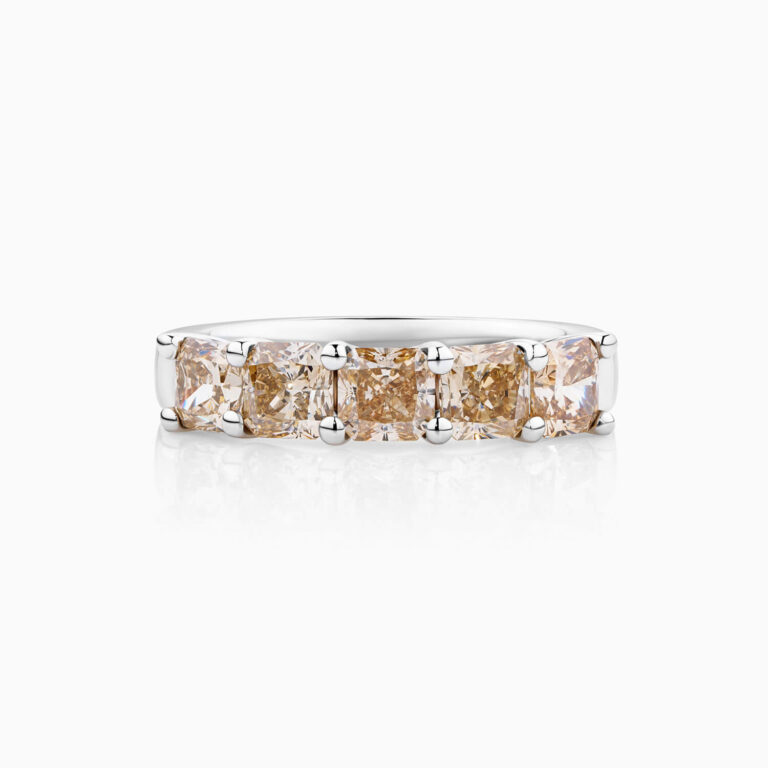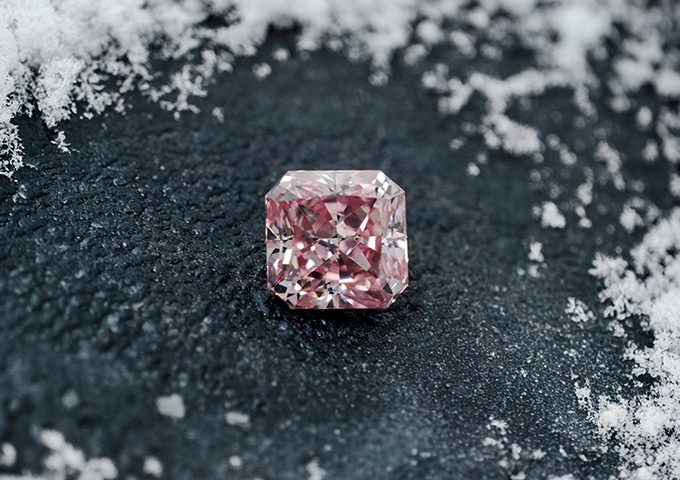The introduction of lab-grown diamonds has gained popularity as a modern and budget-friendly alternative to natural diamonds. Marketed as sustainable and conflict-free, they’ve captured the attention of eco-conscious millennials and Gen Z customers.
However, does this shiny alternative truly live up to its promises?
To uncover the hidden truth, our jewellery expert Nick delves into the world of lab-grown diamonds, revealing their production, market trends, and long-term value. Meanwhile, he reveals complexities that challenge their reputation—raising critical questions about whether they’re a wise investment.
In the podcast, Nick emphasised two critical concerns: the massive energy required to create these diamonds and their inability to retain value in the long run.
Let’s explore why lab-grown diamonds may not be a revolutionary investment or a wise choice to spend money on.
The Energy Paradox: Lab-Grown Diamonds Aren’t as “Green” as You Think
Before our discussion on why massive power consumption is involved in producing lab-grown diamonds, it is vital to understand how a lab-grown diamond is made.
Two primary methods dominate lab-grown diamond production, through Chemical Vapor Deposition (CVD) or High Pressure High Temperature (HPHT)processes, utilizing electricity and machinery to recreate Earth’s conditions.
To create a diamond, the machine needs to generate temperatures of 2,700 Fahrenheit and pressure of 1.5 million pounds per square inch.
The process involves replicating extreme heat conditions—reaching temperatures approaching 20% of those found on the Sun’s surface—demanding massive energy input to form these synthetic diamonds1.
There is a misunderstanding that lab-grown diamonds are more environmentally friendly because they are made not mined. The widely promoted HPHT method is often marketed as mined-free, but it relies on the global mining network long before production begins.
So, what happens before pushing the button to create a synthetic diamond in a machine? You must obtain all the raw minerals to make a diamond, including graphite which is derived from mining and 3 metals, nickel, iron and cobalt.
Especially for cobalt, which is mainly mined from Congo, it has its own ethical considerations right now2.
Companies that are responsible for cobalt mining lack the enforcement of ethical standards, so they fail to ensure transparency and invest in safe mining practices contributing to using forced child labour, unsafe mining conditions and armed military conflicts2.
Nick claims that the average energy required to grow a single piece of a rough lab-grown diamond—enough to be cut and polished into a 1ct jewel—is approximately 520 kilowatt hours.
To make it more relatable, Nick compares this figure to the energy usage of a typical household.
For example, a family of 5 might use around 30-40 kilowatt hours per day, with an air-conditioner running the whole day. This means the energy required to produce just one 1ct lab-grown diamond could power a home for nearly two weeks.
@nickirelandjewellery What is a lab diamond really costing you? Is your love made in lab? Neither should your diamond? #labdiamonds #diamond #engagementring #rings #diamonds #diamondsareagirlsbestfriend #nickireland #brisbane #jeweller #jewellery #brisbanejeweller #diamondtester #labdiamond ♬ Inspirational – neozilla
While lab-grown diamonds are marketed as an environmentally friendly choice, this is on the assumption that the energy used is renewable.
However, most diamond-growing facilities are located where coal is a dominant source of electricity. The carbon footprint of lab-grown diamonds can exceed that of natural diamonds when factoring in the energy mix of their production.
According to the research1, the environmental impact of a one-carat natural diamond from mine to finger is about the same as the environmental impact of manufacturing three smartphones.
It highlights how companies often gloss over these energy costs, instead of using terms like “sustainable” and “eco-conscious” without transparency.
This greenwashing creates a false narrative that lab-grown diamonds are universally better for the planet.
However, without standardised regulations or certifications for sustainable diamond production, consumers are left navigating a landscape of half-truths.
The Illusion of Affordability: Hidden Costs and misleading marketing
Lab-grown diamonds are undeniably cheaper than natural diamonds. A 1-carat lab-grown diamond can cost 80-90% less than its natural counterpart. But Nick raises a critical question: Are buyers truly getting a “deal,” or are they paying for a product with diminishing returns?
Over the past five years, the wholesale prices of lab-grown diamonds have dropped up to 90%, according to industry reports.
This price drop is driven by oversupply, as manufacturers ramp up production to meet demand.
Unlike natural diamonds, which require extensive mining efforts, lab-grown diamonds can be produced in unlimited quantities. As a result, their value is intrinsically tied to manufacturing costs rather than rarity.
Despite dropping wholesale prices, retail markups for lab-grown diamonds remain high.
The video points out that while production costs are declining, brands often maintain elevated prices to preserve profit margins by making people believe that lab-grown diamonds are real diamonds.
This creates a disconnect between the actual cost of creation and what consumers pay—a gap that may narrow as competition increases, further reducing resale value. Nick explains that, when people know the real value of what lab-grown diamonds are worth, they’ll be less attracted to them.
Historically, it is reported that natural diamonds increase in value by about 5% per year3. Although prices have been slightly affected due to the introduction of lab-grown diamonds, natural diamonds will always hold their value in the long term.
Sentimental Value: Why Lab-Grown Diamonds Fall Short in Symbolising Eternal Love
Love is eternal, and a lab diamond is not a sentimental option for a couple willing to enter marriage to show their love is eternal.
When discussing the emotional weight of engagement rings, Nick makes an argument: a lab-grown diamond would not be his choice as a symbol of lifelong commitment to his wife. To him, eternal love mirrors a natural diamond—crafted by time, not machines, over billions of years beneath the Earth’s surface.
“Why would you pass down a diamond to your children that was made in a laboratory with zero romance and zero meaning,” he explains, “while an engagement ring is a special ring.”
When it comes to a deeper cultural and psychological connection between natural diamonds and enduring love, for centuries, natural diamonds have been known not just for their brilliance, but for their rarity and the journey they undertake to reach human hands.
Natural diamonds are formed by the heat and pressure of the Earth, from a billion years ago, making a natural diamond the oldest thing you will ever touch.
On the other hand, lab-grown diamonds, while chemically identical, take away this narrative of natural wonder. As Nick mentions, marriage is about creating a legacy. Only a natural diamond can carry the weight of history.
The critique extends beyond symbolism. Nick argues that lab-grown diamonds fail to capture the sentimental scarcity that gives natural gems their emotional resonance.
This sentiment reflects a growing divide among consumers: those who prioritize affordability and ethics (favouring lab-grown) versus those who view diamonds as precious with irreplaceable meaning.
Yet this debate isn’t purely philosophical—it’s practical. As lab-grown diamonds flood the market, their abundance risks diluting their perceived significance.
Nick’s stance underscores a fear that synthetic gems could reduce engagement rings to transactional items rather than timeless tokens.
Ultimately, Nick’s view challenges the lab-grown industry to address not just environmental or economic concerns, but the intangible human desire for connection to something greater than us.
For couples, a diamond isn’t just a stone—it’s a testament to patience, endurance, and the belief that some things, like love, are truly eternal.
Conclusion: Beyond the Hype
Lab-grown diamonds are undeniably a technological marvel, offering affordability and ethical appeal.
Yet their hidden costs—environmental, financial, and emotional—reveal a more complicated picture. As the market evolves, consumers must weigh short-term savings against long-term value and meaning.
Diamonds are more than carbon structures. They’re symbols of love, commitment, and legacy. Whether created in a lab or forged in the Earth’s mantle, their true worth lies in the stories we attach to them—and the wisdom with which we choose.
Bibliography
- Natural Diamonds vs Lab Grown Diamonds – Natural Diamonds. Only Natural Diamonds. Published February 6, 2025. Accessed March 21, 2025. https://www.naturaldiamonds.com/natural-diamond-types-and-alternatives/lab-grown-diamonds/
- The dark side of cobalt mining on the quest for clean energy. FreedomUnited.org. Published March 15, 2024. Accessed March 21, 2025. https://www.freedomunited.org/news/cobalt-mining-clean-energy/
- Rice K. Award-winning SA jeweller DDS shares the hidden truth behind lab grown diamonds. Glamadelaide.com.au. Published 2025. Accessed March 21, 2025. https://glamadelaide.com.au/award-winning-sa-jeweller-dds-shares-the-hidden-truth-behind-lab-grown-diamonds/


